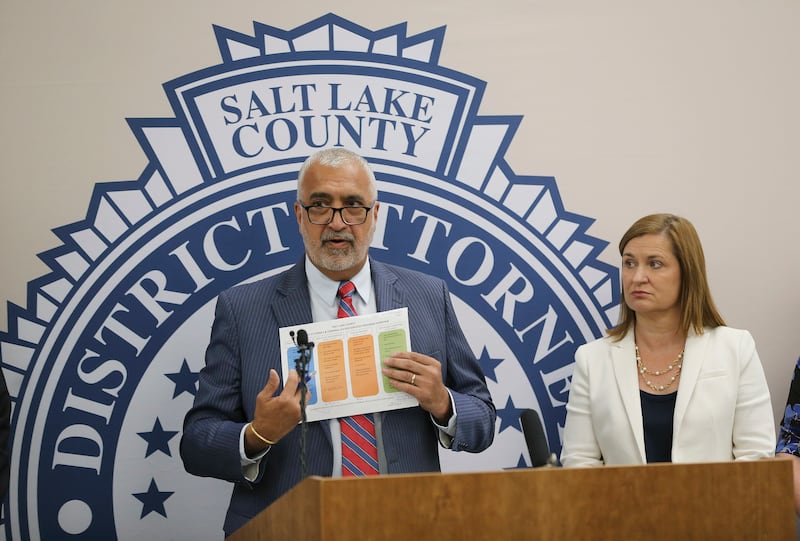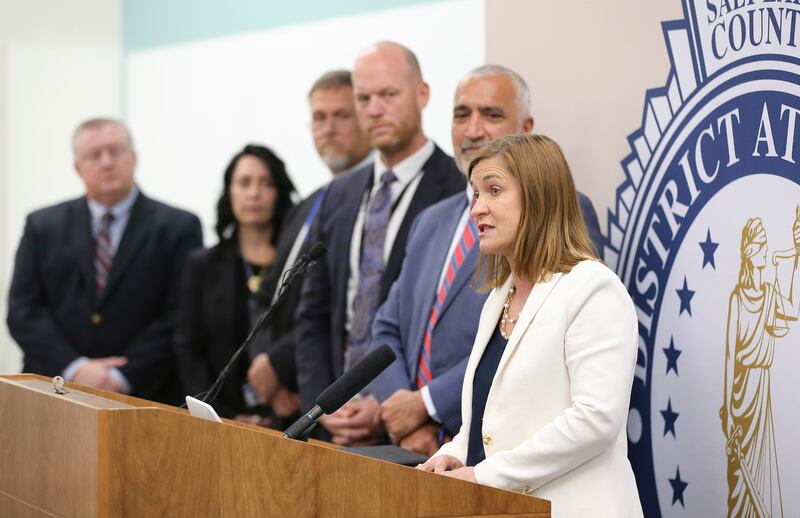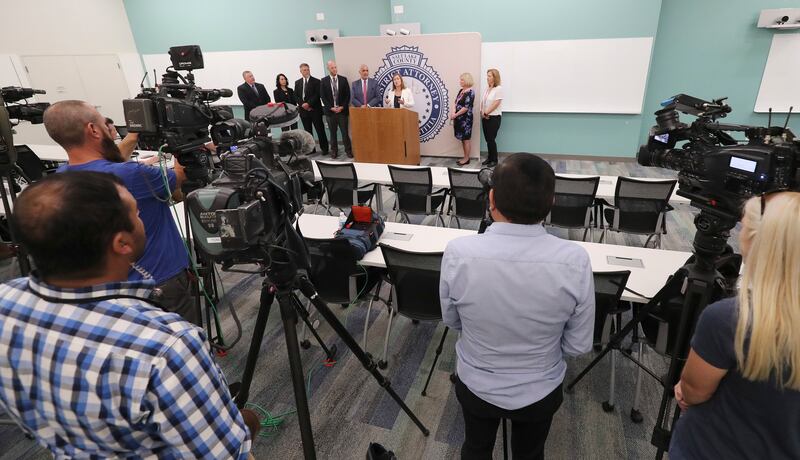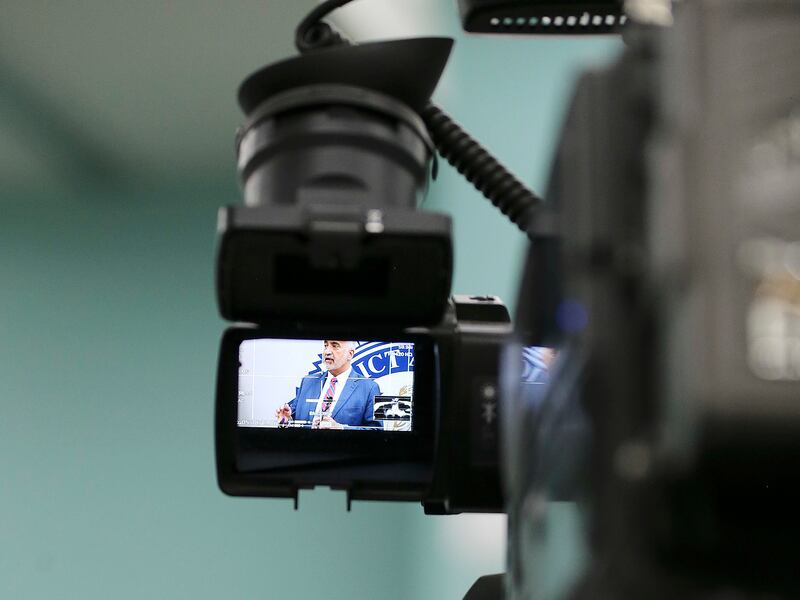SALT LAKE CITY — Beginning Monday, Salt Lake County will roll out a new criminal justice diversion program that prioritizes rehabilitation over prison for low-level offenders.
Salt Lake County District Attorney Sim Gill said the program will reduce the county's prison population and prevent individuals from entering the criminal justice system. It will be phased in over the next 12 to 18 months.
"When we think about criminal justice reform, we think about reforming the existing system, but we have never really paid attention to the flow of people who are going into this," he said, noting that "this is really about slowing the flow of those who are actually entering into the criminal justice system."
At a news conference Tuesday, Gill laid out the pilot program and lauded Salt Lake County Mayor Jenny Wilson for her support of the model, which is expected to divert between 750 and 1,000 individuals per year from the criminal justice system.
"None of us wants to see nonviolent offenders locked up, we want to find ways and systems for forming change," said Wilson.
She noted that "inmates of Salt Lake County Jail are there often because of a bad choice," and overcoming the barrier of the criminal justice system can inhibit the process of rehabilitation.
"My heart goes out to people who are now working to stay clean, to be good parents, to move on (and) get jobs," she said.
Gill said the program has the potential to prevent individuals, such as those apprehended during Operation Rio Grande, from entering the criminal justice system.
"I think that the misdemeanor population is sort of the forgotten population that cycles through this criminal justice system at a higher rate," he said, adding that he had a "mixed take" on the way the operation was handled.
He said the model could eventually expand and reflect on the way law enforcement handles these situations.
"I could foresee myself reaching out to law enforcement and giving them categories of offenses and saying 'do field diversion when you come in contact with these individuals.'"
The new diversion model will intervene at four different levels of the criminal justice process and will be based on a risk assessment of the offender.
A first level of intervention will begin before a case is filed and will apply to crimes that range from nonviolent misdemeanors to third-degree felonies. The suspect must receive a low-risk assessment.
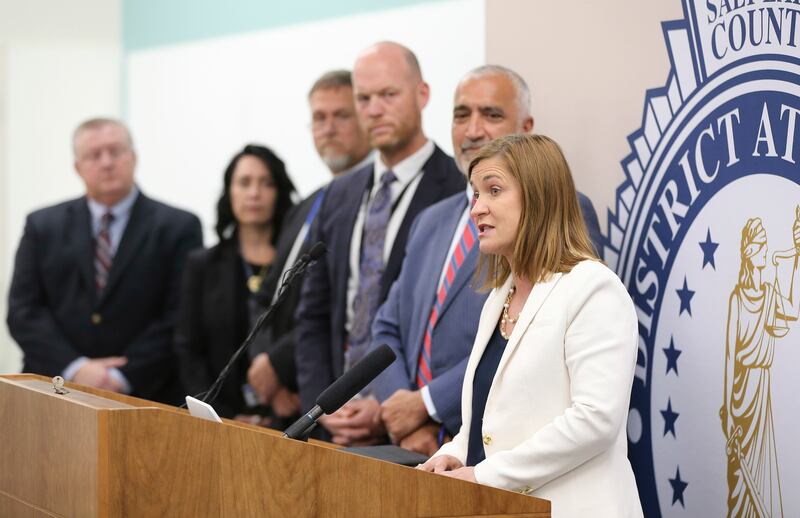
This first level will not apply to cases that involve sexual assault, domestic violence or DUIs. It would require four to six months of rehabilitation that could range from addiction treatment to mental health services.
Secondary level intervention would be initiated after criminal cases that involve restitution have been filed. The program would last from six to nine months, with charges dismissed upon successful completion.
Offenders evaluated as a low to medium risk will enter the third level of the program after they have already accepted a plea in abeyance. After completing a 12- to 36-month program, they would be eligible to have their charges dismissed.
Those with a history of drug use who have been convicted of a crime that does not involve sexual violence or physical violence against a person with a weapon will qualify for the fourth level of the program.
Individuals at all risk levels will qualify for this rehabilitative program. Treatment would involve a behavioral change plan with intense supervision probation and drug court rather than jail time. The case would be closed upon successful completion of the program.
Starting Monday, prosecutors will begin offering the programs not only to those who face charges but also to qualifying individuals who are already engaged in the criminal justice system.
The program, Gill said, aims to strike a balance between "public safety and meaningful structure with proportionate support to ensure individual success."
He said the model would not have a fiscal impact on the city as it would employ community resources already in place, but noted that it would initially increase the department's workload.
Criminal justice reform, he added, will need to include "innovative and creative treatment options for those who find themselves in this process."
"We can't jail and arrest our way out of this challenge that is before us," Gill said, adding that "we recognize that we jail more human beings in the United States of America than any other country in the world."

